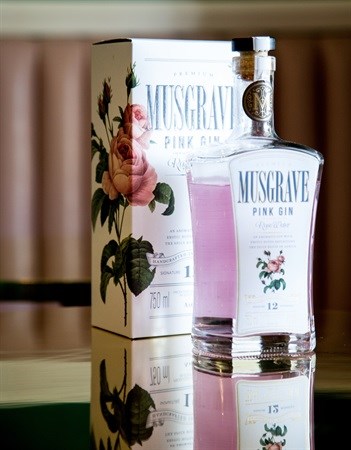Simone Musgrave, founder of Musgrave Gin, pioneered the pink gin trend in South Africa after finding a niche in the market whilst working as a trend forecaster.
Traveling the world, she would taste a variety of food and drink, track trends, look at ideas and predict up-and-coming products. As she traveled, she noticed the craft trend shifting between categories and the biggest category of all just so happened to be gin.
Where craft came from
The global spirits market found itself flat in the early part of 2012. Since then, premiumisation has continued as a major trend with craft being highly influential – a spin-off from the premiumisation trend. Millennials are drinking differently with quality not quantity taking priority in their choices. As people have become more aware of what they are drinking and eating, craft has spread from food, to beer, to spirits, which all play an equal role in their lives according to their values.
The flavour factor
Flavour is a particularly big driver for millennials. Adding flavour to a product not only makes the spirit more accessible in taste, but also offers the consumer something new and exciting.
Mintel’s reported that flavour in the US is the biggest consumer driver for dark spirits purchases. The same report states Jack Daniel’s Tennessee Honey whiskey sales have grown in double digits – as has Jim Bean’s flavoured whiskies.
As flavour is important, so is variation. Care needs to be taken to counteract consumers' short attention spans with constant innovation – continuously feeding the hunger for 'new'.
Fruit, spice and flowers are the top flavours in spirits gaining the most attention.
Complex spirits
The spirits categories that are seeing growth and are linked directly into the premiumisation and craft trends are those which deliver drinkers a more nuanced and multi-layered taste experience. Stories about how it is produced, who the crafter is, the ingredient origins and their ethical sourcing all come together to create a more complex brand.
The increase in Bourbon and the evident decline of Scotch illustrates this trend story. United States whiskies (Bourbon) continue to thrive globally – helped by a naturally sweeter and mellower taste, the revival of popular cultural interest in 'Americana' and a more experimental ethos in terms of flavouring whiskies.
Cocktails rise up and are less sweet
Four of the top selling cocktails are now bitter, not sweet: The Old Fashioned, Negroni and the sour Moscow Mule. Similarly, bitters are now also experiencing a revival. Having previously only been used for colour in a Pink G&T they are now being used to change up cocktail flavours. Bars can often be found making their own bitters and using them to create their own signature cocktails.
Mintel reported, “Gruppo Campari’s bitters brand Aperol – popularised by its signature Aperol Spritz serve – is currently performing very well in Europe and North America. In fact, Aperol was the fastest growing global speciality spirit brand in 2014, according to drinks publication The Spirits Business.”
In summary:
- Craft is growing and emerging countries are seeing large growth with big brands finding themselves in the middle ground;
- Premiumisation offers up opportunities for innovation;
- Sour and bitter, spicy and fruity are the areas of flavour to watch.
Musgrave Gin was awarded two Michelangelo Wine & Spirits Awards, namely Musgrave 11 (Silver Award) and Musgrave 12 Pink Gin (Gold Award). Cape Town’s very first pink gin is now not only the first, but the only gold award-winning product in its category.

























